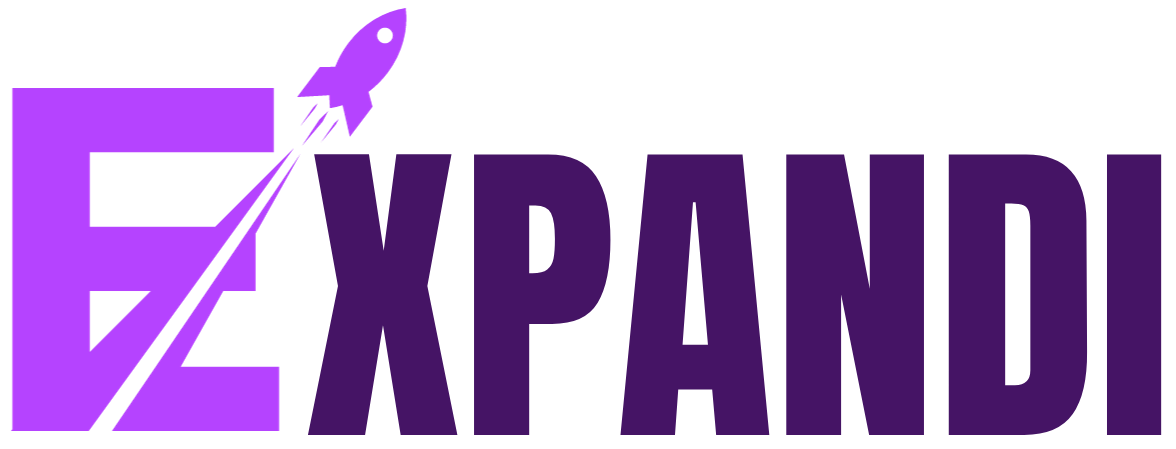In today’s fast-paced and ever-changing world, the ability to stand out and be recognized as an expert in your field is more important than ever. As social media has become an integral part of our lives, LinkedIn has emerged as the premier platform for professionals to showcase their skills and expertise. And while having a LinkedIn profile is a great start, simply having a presence on the platform is not enough to truly stand out. Becoming a LinkedIn thought leader can help become the go-to-person in your niche and unlock more opportunities.
Thought leaders are individuals who are recognized as experts in their field and who have a deep understanding of the trends, issues, and challenges facing their industry. They are the ones who are sought out for their insights and opinions, and who are seen as authorities in their respective areas of expertise.
In this blog post, we’ll explore what it means to be a LinkedIn thought leader, why it matters, and how you can position yourself as one. We’ll delve into the specific strategies and tactics you can use to build your thought leadership presence on the platform, including content creation, networking, and engagement.
Whether you’re a seasoned professional or just starting out in your career, this post will provide you with the insights and guidance you need to become a thought leader on LinkedIn and establish yourself as a trusted authority in your industry.
Why be a LinkedIn thought leader?
Becoming a thought leader on LinkedIn offers numerous benefits, both personally and professionally. Here are just a few reasons why it’s worth investing the time and effort to establish yourself as an authority on the platform:
- Helps build a personal brand: By consistently sharing your insights and expertise on LinkedIn, you can build a strong personal brand that sets you apart from your peers. This can help you attract new opportunities, whether that’s new clients, job offers, or speaking engagements.
- Helps establish credibility: When you consistently share valuable content and insights, you establish yourself as a credible authority in your field. This can help you build trust with your audience and position yourself as a go-to resource for industry insights.
- Increases profile visibility: As you build your thought leadership on LinkedIn, you’ll gain more visibility on the platform. This can lead to increased engagement on your posts, more followers, and ultimately more opportunities to connect with other professionals in your industry.
- Stay on top of industry trends: By actively engaging with other thought leaders and following industry hashtags, you can stay up to date on the latest trends and developments in your field. This can help you stay ahead of the curve and position yourself as a thought leader who is always in the know.
Overall, becoming a LinkedIn thought leader can help you establish yourself as an authority in your field, build your personal brand, and attract new opportunities. It’s a valuable investment that can pay dividends for years to come.
6 tips for becoming a LinkedIn thought leader
Here are 6 actionable tips for building your thought leadership on LinkedIn and establishing yourself as an authority in your field.
1. Define your niche
Choosing a specific area of expertise is crucial when it comes to building your thought leadership presence on LinkedIn. Defining your niche allows you to focus your efforts and establish yourself as an authority in a particular area.
It also helps you stand out from the crowd and attract a specific audience that is interested in your expertise. By focusing on a specific niche, you can create more targeted and relevant content, which is more likely to resonate with your audience and generate engagement.
So, to identify and select your niche, start by asking yourself the following questions:
- What are my unique skills and strengths?
- What topics am I most passionate about?
- What problems can I solve for my audience?
- What gaps do I see in my industry that I can fill?
Once you have a sense of your skills and interests, research your industry to see where there is a need for your expertise. Look for areas where you can provide unique insights or perspectives, and where there is a lack of quality content. You can also use LinkedIn to see what topics are trending in your industry and what types of content are generating the most engagement.
Ultimately, the key is to choose a niche that aligns with your skills and passions, and that provides value to your audience. By doing so, you can establish yourself as a thought leader in your field and build a loyal following of engaged followers.
2. Develop your personal brand
Your personal brand is how you present yourself to the world, and it’s what sets you apart from your peers. On LinkedIn, your personal brand is what helps you attract followers, establish credibility, and build trust with your audience. It’s a way to showcase your unique skills, expertise, and personality, and to position yourself as an authority in your field.
To build a strong personal brand on LinkedIn, start by focusing on the following:
- Optimize your profile: Make sure your profile is complete, professional, and aligned with your personal brand. Use a high-quality headshot, include a strong headline and summary, and showcase your skills and experience.
- Share valuable content: Consistently share high-quality content that is relevant to your audience and aligned with your niche. This can include articles, blog posts, videos, and infographics.
- Engage with your audience: Engage with your followers by responding to comments and messages, and participate in conversations and groups. This helps build trust and establishes you as an approachable and knowledgeable thought leader.
- Network with other thought leaders: Connect with other thought leaders in your industry and collaborate with them on content or events. This helps expand your reach and provides opportunities to learn from others.
3. Create valuable content
Creating valuable content is a key component of becoming a LinkedIn thought leader. Creating valuable content is essential for establishing yourself as an authority in your niche and attracting a loyal following of engaged followers.
By sharing insights, tips, and thought-provoking ideas, you can establish yourself as a thought leader in your field and build trust with your audience. Valuable content also helps to increase your visibility on LinkedIn, as it is more likely to be shared and recommended by others.
To create engaging content on LinkedIn, consider the following tips:
- Focus on quality: Rather than trying to churn out a high volume of content, focus on creating high-quality, well-researched pieces that provide value to your audience.
- Use visuals: Incorporate visuals, such as images and videos, into your content to make it more engaging and shareable.
- Tell stories: Use storytelling techniques to make your content more relatable and memorable. This can help to create an emotional connection with your audience and keep them engaged.
- Be authentic: Share your personal experiences and perspectives, and don’t be afraid to show your personality. This can help to establish a connection with your audience and make your content more engaging.
By creating valuable, engaging content on LinkedIn, you can establish yourself as a LinkedIn thought leader and build a loyal following of engaged followers.
4. Engage with your audience
Engaging with your audience on LinkedIn helps to build trust and establish you as an approachable and knowledgeable thought leader. It also helps to increase your visibility on the platform, as engagement metrics are taken into account when LinkedIn determines the reach of your content. Engaging with your audience can also provide valuable insights and feedback, which can help to inform your content strategy.
To engage with your audience on LinkedIn, follow these tips:
- Respond to comments and messages: Take the time to respond to comments and messages from your followers. This shows that you value their input and are interested in what they have to say.
- Participate in groups: Join LinkedIn groups that are relevant to your niche and participate in conversations. This can help to expand your reach and connect with like-minded individuals.
- Ask questions: Use your content to ask questions and spark conversation. This can help to increase engagement and provide valuable insights into what your audience is interested in.
- Share others’ content: Share content from other thought leaders in your industry and tag them in your posts. This can help to build relationships and increase your visibility.
5. Network with other LinkedIn thought leaders
Networking with other thought leaders can help you build relationships, expand your reach, and learn from other experts in your field. By connecting with other thought leaders, you can gain insights into industry trends, share ideas, and collaborate on projects. Networking can also help to increase your visibility on LinkedIn, as it allows you to tap into the networks of other thought leaders.
Here are some tips on how to connect with thought leaders in your industry on LinkedIn:
- Participate in groups: Join LinkedIn groups that are relevant to your niche and participate in conversations. This can help you connect with like-minded individuals and establish relationships with other thought leaders.
- Attend industry events: Look for industry events, such as conferences and webinars, and attend them to meet other thought leaders in person or virtually.
- Share their content: Share content from other thought leaders in your industry and tag them in your posts. This can help to build relationships and increase your visibility.
- Reach out to them directly: If you admire the work of a particular thought leader, reach out to them directly to introduce yourself and start a conversation. Be genuine and respectful in your approach.
By networking with other thought leaders on LinkedIn, you can expand your reach, gain insights into industry trends, and build valuable relationships with other experts in your field.
6. Stay up-to-date with industry news and trends
Staying current with industry news and trends is important for maintaining your credibility as a thought leader and providing valuable insights to your audience. By staying informed, you can identify emerging trends, anticipate changes in the industry, and position yourself as a go-to source for the latest information.
To stay up-to-date with industry news and trends on LinkedIn, consider the following tips:
- Follow industry influencers: Identify thought leaders in your industry and follow them on LinkedIn to stay informed about their latest insights and updates.
- Set up alerts: Use LinkedIn’s alerts feature to receive notifications when there are updates on specific topics or from specific people.
- Join relevant groups: Join LinkedIn groups that focus on your niche to stay informed about the latest news and trends.
- Read industry publications: Subscribe to industry publications and websites to stay informed about the latest news and trends in your field.
Key Takeaways
In conclusion, becoming a thought leader on LinkedIn requires a deliberate effort to establish your expertise, build your personal brand, and engage with your audience. By following the tips outlined in this article, you can position yourself as a go-to source of information in your industry and build a loyal following of like-minded individuals.
To recap, we discussed the importance of defining your niche and selecting a specific area of expertise, developing your personal brand, creating valuable content, engaging with your audience, networking with other thought leaders, and staying up-to-date with industry news and trends.
Becoming a thought leader on LinkedIn is not an overnight process, but with consistent effort and dedication, you can establish your credibility and build a loyal following. Remember to stay true to your values and provide value to your audience, and you’ll be well on your way to becoming a respected thought leader in your industry.
Also, consider using a LinkedIn automation tool such as expandi to one-up your process. With expandi, you can send automated connect and messaging sequences. With a click, you can import contacts from basic search, sales navigator search, various social media handles, and build a leads list. So, sign up for a free 30 day trial.








